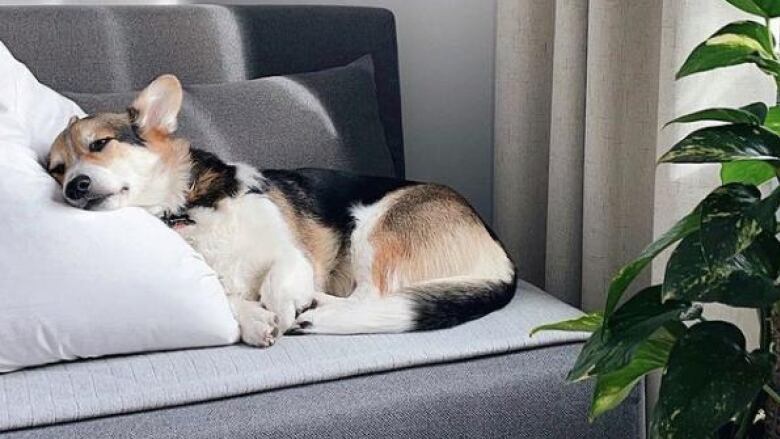Planning, practice key to keeping pandemic pets happy during return to in-person work: veterinarian
People who adopted animals during the pandemic are slowly returning to the office

For many people, heading back to working in an officewill be the first time leaving their pandemic puppy or cat home alone all day.
Many dogs or cats adoptedin the past 17 months have been with people non-stop during that time and will need to adjust. A veterinarian said it all comes down to taking time to make sure they are prepared.
"Simulate the departures and the time away, but to do it slowly and gradually over time. And when you're doing it, also make sure that the animal is not experiencing any anxiety," said Dr. Karen Machin, who teaches at the Western College of Veterinary Medicine at the University of Saskatchewan.
If the animals are experiencing anxiety, it typically means that you are going too fast with the transition. It's best to go slow, potentially watching them through a home camera to make sure they are doing well, she said.
Machin said when it comes to puppies, each one may be ready to be home alone at a different time. She said some are rambunctious and others may chew on things, so it's important to do tests, leaving them at home gradually over time to see how it goes.
"If they can't, then you're probably going to have to do some confinement training to make sure that they're OK in a smaller area on their own for an extended period," Machin told The Afternoon Edition.
LISTEN|Dr. Karen Machin spoke with Garth Materie on The Afternoon Edition
Machin said the easiest way to crate train an animal is by using food. Start by feeding them with the door open and get them used to the space, Machin said.
"So that they're like, 'Oh, yeah, I go in there.' They're willing to go in there. They're happy because their breakfast or lunch or dinner or whatever is in the crate. And then when you're ready to transition to closing the door, you know that they're comfortable," she said.

Slowly lengthen the amount of time the animals spend there and begin leaving for a short period of time. Have things ready to keep your animal occupied, she said.
"If you have a number of things to keep your dog, your cat occupied during the day, then they won't miss you as much either," she said.
If animals are still experiencing anxiety, there are medications for either short or long term anxiety, Machin said. People could also think about ways for their pet to not have to be alone all day,such as by having a dog walker come by or taking the pooch to a doggie day care.
"Not all dogs are okay in that environment with a lot of other animals. So you may have to look for someone in your community who is home and wouldn't mind the company," she said.
With files from The Afternoon Edition












_(720p).jpg)


 OFFICIAL HD MUSIC VIDEO.jpg)
.jpg)



























































































